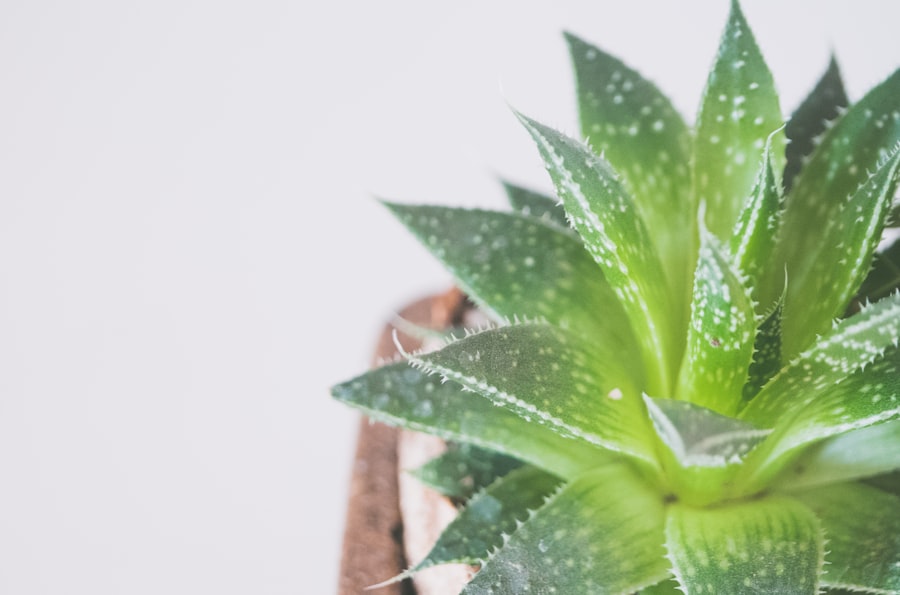Laser hair removal is a popular cosmetic procedure that utilizes concentrated beams of light to target and eliminate unwanted hair. As you consider this option, it’s essential to understand how the process works. The laser emits a specific wavelength of light that is absorbed by the pigment in the hair follicles.
This absorption generates heat, which damages the follicle and inhibits future hair growth. The procedure is most effective on individuals with light skin and dark hair, as the contrast allows the laser to target the hair more effectively. Before you decide to undergo laser hair removal, it’s crucial to have realistic expectations.
While many people experience significant hair reduction after a series of treatments, complete hair removal is not guaranteed. Factors such as hair color, skin type, and hormonal influences can affect the outcome. Additionally, multiple sessions are typically required to achieve optimal results, as hair grows in cycles and not all hairs are in the same growth phase at the same time.
Understanding these nuances will help you make an informed decision about whether this treatment is right for you.
Key Takeaways
- Laser hair removal targets hair follicles to reduce hair growth
- Avoid sun exposure and certain skincare products before treatment
- Use ice packs and over-the-counter pain medication for discomfort
- Moisturize and protect the skin from sun exposure post-treatment
- Watch for signs of infection and contact a professional if needed
Preparing for Laser Hair Removal Recovery
Consultation with a Qualified Practitioner
Scheduling a consultation with a qualified practitioner is crucial in preparing for laser hair removal. During this consultation, you should discuss your medical history, any medications you are taking, and your expectations for the treatment. This information will help your practitioner tailor the procedure to your specific needs and ensure a safe experience.
Pre-Treatment Precautions
In the weeks leading up to your treatment, it’s essential to take certain precautions to minimize potential risks. Avoid sun exposure and tanning beds, as tanned skin can increase the risk of complications. Additionally, refrain from waxing or plucking hair in the treatment area for at least four weeks prior to your appointment.
Optimal Hair Preparation
Shaving is usually recommended instead of waxing or plucking, as it leaves the hair follicle intact while removing the visible part of the hair above the skin. This preparation will help maximize the effectiveness of the laser treatment and minimize potential side effects. By following these guidelines, you can ensure a successful and safe laser hair removal experience.
Managing Pain and Discomfort

While many people report that laser hair removal is relatively painless, some discomfort may occur during the procedure. You might experience a sensation similar to a rubber band snapping against your skin as the laser pulses. To help manage any pain or discomfort, your practitioner may apply a topical anesthetic before the treatment begins.
This can significantly reduce sensitivity in the area being treated. After your session, you may experience mild redness or swelling in the treated area, similar to a sunburn. Over-the-counter pain relievers such as ibuprofen or acetaminophen can be effective in alleviating any lingering discomfort.
Applying a cool compress to the area can also provide relief and help soothe your skin. It’s important to listen to your body and communicate with your practitioner if you experience any unusual pain or discomfort during or after the procedure.
Caring for the Skin Post-Treatment
| Post-Treatment Care | Recommendation |
|---|---|
| Sun Protection | Use sunscreen with SPF 30 or higher |
| Hydration | Drink plenty of water and use moisturizers |
| Gentle Cleansing | Avoid harsh cleansers and use gentle products |
| Avoid Irritants | Avoid products with fragrances and alcohol |
Post-treatment care is crucial for ensuring optimal results from your laser hair removal sessions. After your procedure, your skin may be sensitive and require gentle handling. Avoid using harsh soaps or exfoliants for at least a week following treatment.
Instead, opt for mild cleansers that won’t irritate your skin. Keeping the area clean and moisturized will help promote healing and reduce any potential discomfort. Sun protection is another vital aspect of post-treatment care.
Your skin will be more susceptible to sun damage after laser hair removal, so applying a broad-spectrum sunscreen with an SPF of 30 or higher is essential whenever you go outdoors. Reapply sunscreen every two hours if you are spending extended periods outside. Additionally, wearing protective clothing can further shield your skin from harmful UV rays and prevent pigmentation changes.
Avoiding Complications and Side Effects
While laser hair removal is generally considered safe, there are potential complications and side effects that you should be aware of. Common side effects include temporary redness, swelling, and mild discomfort in the treated area. However, more serious complications can occur if proper precautions are not taken.
For instance, burns or blisters may develop if the laser settings are not appropriately adjusted for your skin type. To minimize risks, it’s crucial to choose a qualified and experienced practitioner who uses FDA-approved equipment. Always follow their pre- and post-treatment instructions carefully.
If you notice any unusual symptoms such as excessive swelling, blistering, or changes in skin pigmentation after your treatment, contact your practitioner immediately for guidance. Being proactive about your health and safety will help ensure a positive experience with laser hair removal.
Speeding Up the Healing Process

After undergoing laser hair removal, you may be eager to speed up the healing process so you can enjoy your results sooner. One effective way to promote healing is by staying hydrated. Drinking plenty of water helps maintain skin elasticity and supports overall recovery.
Additionally, incorporating foods rich in vitamins A, C, and E into your diet can aid in skin repair and regeneration. Gentle exfoliation can also be beneficial once your skin has healed sufficiently—typically after a week or so post-treatment. Using a soft washcloth or a gentle exfoliating scrub can help remove dead skin cells and promote new cell growth.
However, be cautious not to over-exfoliate or irritate your skin during this time. Always consult with your practitioner about when it’s safe to resume exfoliation based on your individual healing progress.
Long-Term Care and Maintenance
Once you’ve completed your series of laser hair removal treatments, long-term care becomes essential for maintaining your results. While many individuals experience significant hair reduction, some may notice fine hairs regrowing over time due to hormonal changes or other factors. Regular maintenance sessions can help keep these hairs at bay and ensure that you continue to enjoy smooth skin.
In addition to maintenance treatments, adopting a consistent skincare routine is vital for preserving the health of your skin post-laser treatment. This includes using gentle cleansers, moisturizers, and sunscreen daily. Regularly moisturizing will keep your skin hydrated and supple while protecting it from environmental stressors that could lead to irritation or damage.
Seeking Professional Help if Needed
Even with proper care and attention, there may be times when you need professional assistance during your laser hair removal journey. If you experience any unexpected side effects or complications that concern you, don’t hesitate to reach out to your practitioner for advice. They can provide guidance on how to manage any issues that arise and ensure that you receive appropriate care.
Additionally, if you find that you are not achieving the desired results after several sessions, it may be worth discussing alternative options with your practitioner. They can assess whether adjustments to your treatment plan are necessary or if other methods might better suit your needs. Remember that open communication with your healthcare provider is key to achieving the best possible outcomes from your laser hair removal experience.
In conclusion, understanding laser hair removal involves more than just knowing how it works; it encompasses preparation, post-treatment care, and ongoing maintenance for optimal results. By following these guidelines and seeking professional help when needed, you can navigate this journey with confidence and enjoy smoother skin for years to come.
If you are looking to speed up the healing process after laser hair removal at home, you may want to check out this article on how to customize your skincare routine to promote faster healing.
FAQs
What is laser hair removal?
Laser hair removal is a cosmetic procedure that uses a concentrated beam of light (laser) to remove unwanted hair. The laser targets the pigment in the hair follicles, damaging them and inhibiting future hair growth.
How can I speed up healing after laser hair removal at home?
To speed up healing after laser hair removal at home, you can follow these tips:
– Keep the treated area clean and dry
– Apply aloe vera gel or a soothing moisturizer to the treated area
– Avoid sun exposure and use sunscreen if going outside
– Avoid picking or scratching the treated area
– Follow any specific aftercare instructions provided by your laser hair removal technician
How long does it take for the skin to heal after laser hair removal?
The healing time after laser hair removal can vary depending on the individual and the size of the treated area. In general, the skin may take a few days to a couple of weeks to fully heal.
Are there any home remedies to help with healing after laser hair removal?
Some home remedies that may help with healing after laser hair removal include applying aloe vera gel, using a cold compress to reduce swelling, and keeping the treated area moisturized with a gentle, fragrance-free lotion.
What are the potential side effects of laser hair removal?
Potential side effects of laser hair removal may include redness, swelling, itching, and temporary changes in skin pigment. In rare cases, blistering, scarring, or infection may occur. It’s important to follow proper aftercare instructions and seek medical attention if you experience severe or prolonged side effects.




